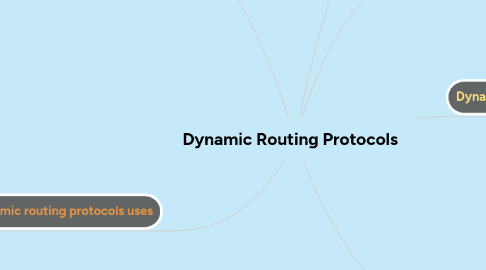Dynamic Routing Protocols
by Khairul Ikhwan

1. Static routing advantages vs disadvantages
1.1. Advantages
1.1.1. Easy to implement in small network
1.1.2. Route to destination is always the same
1.1.3. Very secure
1.1.4. No routing algorithm or update mechanism required
1.2. Disadvantages
1.2.1. Suitable only for simple topologies
1.2.2. Configuration complexity increases dramatically as network grows
1.2.3. if a links fails,a static route cannot reroute traffic
2. Dynamic routing protocols uses
2.1. help the network administrator manage the time-consuming and exacting process of configuring and maintaining static routes.
2.2. Dynamic Routing Advantages and Disadvantages
2.2.1. Advantages
2.2.1.1. Suitable in all topologies where multiple routers are required
2.2.1.2. Generally independent in network size
2.2.1.3. Automatically adapts topology to re-route traffic if possible
2.2.2. Disadvantage
2.2.2.1. Less secure
2.2.2.2. Can be more complex to impllement
2.2.2.3. Required additional CPU, Ram and link bandwith
2.3. Dynamic routing is the best choice for large network
3. Dynamic routing revolution
3.1. First routing protocol is RIPv1 Released in 1998
3.2. The RIP protocol was updated to RIPv2
3.3. two advanced routing protocols were developed to address the need of larger network
3.4. 1.Open Shortest Path First (OSPF) 2.Intermediate System-to-Intermediate System (IS-IS).
4. Dynamic routing component
4.1. used to facilitate the exchange of routing information between routers.
4.2. The purpose: *Discovery of remote networks *Maintaining up-to-date routing information *Choosing the best path to destination networks *Ability to find a new best path if the current path is no longer available
4.3. The main component: 1.Data structures 2,Routing protocol messages 3.Algorithm
5. Static routing uses
5.1. Providing ease of routing table maintenance in smaller networks that are not expected to grow significantly.
5.2. Routing to and from a stub network, which is a network with only one default route out and no knowledge of any remote networks.
5.3. Accessing a single default route (which is used to represent a path to any network that does not have a more specific match with another route in the routing table).
6. A routing protocol is a set of processes, algorithms, and messages that are used to exchange routing information and populate the routing table with the routing protocol's choice of best paths.



